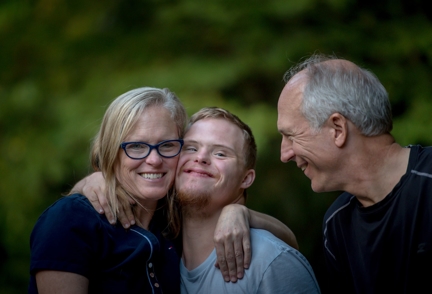 If you have a loved one with special needs, it’s important that you consider an estate plan that will allow them to continue receiving support and enjoy a comfortable retirement even after you, their primary caretaker, have passed away. We recently interviewed our Associate Attorney, Triston Dallas, about key points that parents or family members who are caring for a special need’s family member should be aware of.
If you have a loved one with special needs, it’s important that you consider an estate plan that will allow them to continue receiving support and enjoy a comfortable retirement even after you, their primary caretaker, have passed away. We recently interviewed our Associate Attorney, Triston Dallas, about key points that parents or family members who are caring for a special need’s family member should be aware of.
“Special needs”, for estate planning purposes, refers to a person who has a disability which qualifies for social security and other government benefits. Disabilities can range from a mental disability, such as Down Syndrome or Asperger’s, to a physical disability, such as blindness or deafness.
When considering setting up a special need’s estate plan, the key is making arrangements that will allow you or other family members to pass down money or assets in a way that will also allow the individual to maintain their eligibility for covered benefits, such as social security or Medicaid, amongst other resources. Without proper planning, it can be easy, and in turn damaging, for a family member to misstep and create an estate plan that exceeds the resource limit applied to benefits, causing the special needs individual to lose eligibility.
In order to achieve this, there needs to be mutual participation and understanding between all members of a family who are interested in passing down money or assets to the disabled individual. For example, if the individual’s parents successfully set up an estate plan that would maintain government benefits, but a sibling states, in their own will, without consulting with the family, that they want their house to go to their brother or sister, suddenly the disabled individual may have acquired an asset that could block their benefits eligibility.
According to Dallas, a disabled individual can still receiving some level of government benefits, and also:
- Own one home, in their name, in which they must reside
- Own one vehicle
- Work and earn an income (but the amount of time worked will have an effect on how much they receive in government benefits)
- Have $2,000 in their name.
While social security can offer a list of additional assets that are considered exempt (such as an Apple TV, or a personal laptop), big assets or investments will start to count against the disabled individual.
“Obviously $2,000 does not seem like a lot of a lot of money, and it isn't; it's a really low number,” says Dallas. “But it's actually very possible to maintain and stay under that limit with some proper planning.”
 The two primary planning options to assist a disabled individual in staying under the $2,000 resource limit are a Special Needs Trust, which can be either first-party or third-party, as well as an ABLE account.
The two primary planning options to assist a disabled individual in staying under the $2,000 resource limit are a Special Needs Trust, which can be either first-party or third-party, as well as an ABLE account.
“A long-term solution is a special needs or supplemental needs trust. This can be created in two ways. You can have a first party special needs trust, which is used when the individual who has a disability has assets in their possession in their name already. So it’s a special needs individual with their own funds or own money put into a trust,” says Dallas. “Then there's a third-party special needs trust, which comes from, most often, Mom and Dad who are leaving funds behind for their son or daughter. So it's one person leaving funds behind for another person, which is where the third person comes in. And those funds can then be used for the benefit of the individual with a disability for their lifetime.”
When trying to determine if a first-person or third-person trust is better suited for your unique situation, it’s important to understand some of the primary differences between the two.
“The two major differences between the two [types of trusts] is that a first-party special needs trust is always irrevocable. A third-party special needs trust can be either irrevocable or revocable,” says Dallas. “Additionally, with a first-party special needs trust, there is a "Medicaid payback", which means if something was to happen to the individual with the disability and they were to pass away, any funds left within the first-party special needs trust would then go back to Medicaid, whereas this does not happen in the third-party special needs trust.”
When determining how to fund the trust for a disabled individual, Dallas says there are few methods which are common:
- Create a testamentary trust: this is a trust that does not become active until the grantors have passed away.
- Create and fund at third-party trust now. However, this will be subject to accounting and taxes.
- Create a third-party trust as a “dry” trust, meaning it’s active but there’s nothing in it. This allows family members to include this third-party special needs trust in their own estate plans.
- Create an ABLE account. This is an account that can accumulate $15,000/annually, or $100,000 in total, of funds that will not count against the resource limit or eligibility of the individual with a disability. This account also allows for the special-needs individual to have access to a set amount of funds via a loadable debit card. Unlike first- and third-party special needs trusts, an ABLE account cannot account for assets; it can only account for money. Therefore, it’s a great option to be considered alongside a trust, rather than in place of a trust.

.2007240653550.jpg)